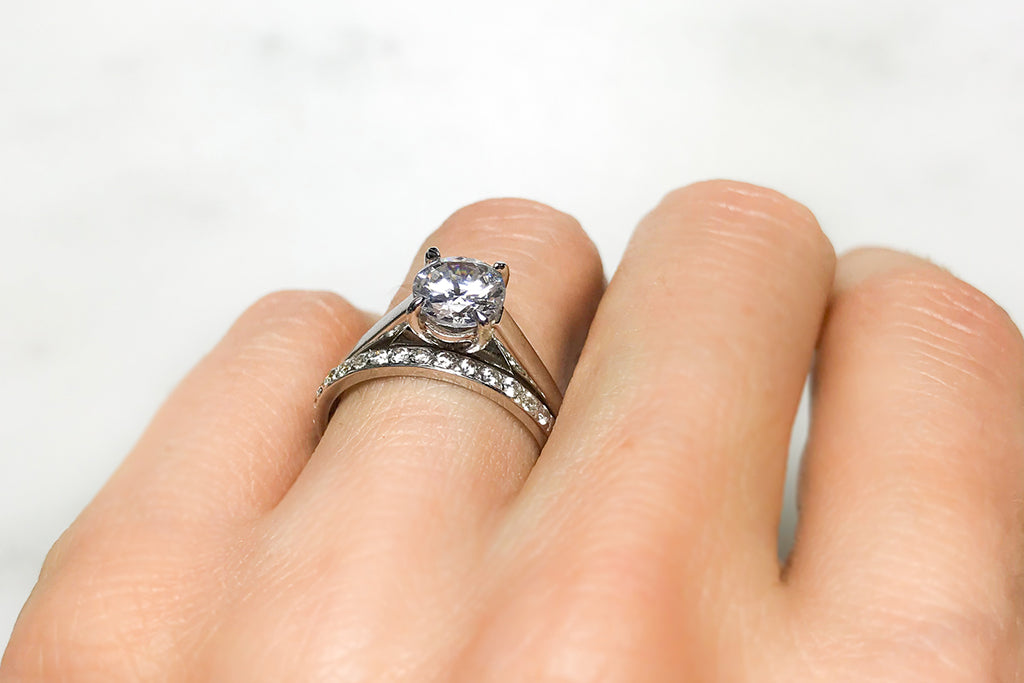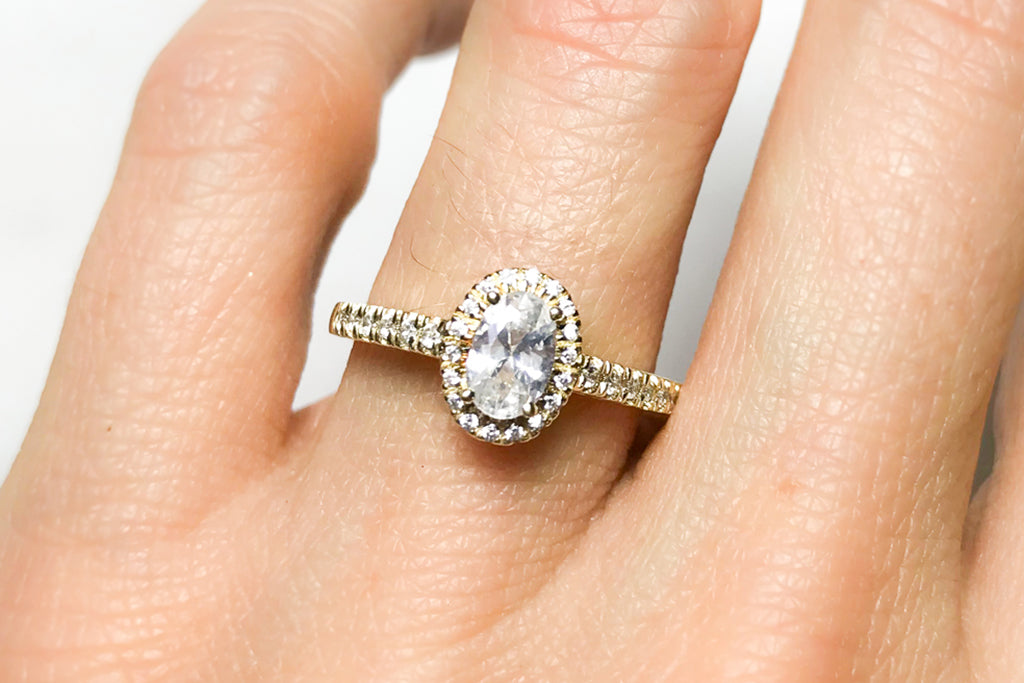Your Cart is Empty
Today, husbands- and brides-to-be can pick from a plethora of styles, from the traditional diamond solitaire to Victorian-style trilogy rings, flashy halo numbers and everything in-between. But, with vast choice can sometimes come befuddlement.
This blog defines the most common types up gemstone setting, weighing up the pros and cons of each to make the decision-making process that tiny bit easier for you.

In 1886, Tiffany & Co. debuted their revolutionary Tiffany® Setting ring. A slim platinum ring set with a single diamond, this was the first design ever to elevate the stone from the band, enhancing its natural radiance by allowing light to enter and leave at every angle. Celebrated in film, art and literature, the six-claw Tiffany® Setting quickly became the face of the engagement ring as we know it.
This classic setting is characterised by metal prongs; usually 4-6, depending on the shape and size of the central stone. Designed to thrust your gem into the spotlight, it’s often selected for those who favour sparkle, radiance and old-school romance.
We love how the four-prong setting in our timeless Vega ring enables the diamond to fulfil its superstar potential.
PROS: The claw setting carries serious ‘Wow!’ factor and celebrates a gemstone’s natural beauty in a way that no other setting can. What’s more, a raised setting also enables a future wedding band to sit perfectly flush to its neighbouring engagement ring, making life much easier for the bride who likes her jewellery just-so.
CONS: By the delicate nature of the claw setting, it must be treated with the utmost care. Not only does a raised setting leave your central stone exposed and somewhat vulnerable, the setting itself is comprised of very thin strands of metal. If a foreign body lodges itself under a claw (think clothing or hair!), the prong is easily bent – enough, sometimes, to loosen the stone. A client of ours recently lost her diamond in the shower because a strong nylon thread from her loofah caught underneath a claw and lifted it. For this reason, we recommend never wearing a claw-setting engagement ring whilst showering, playing sports or carrying out any form of manual labour with the hands.

The halo setting is all about impact. Encircling the central stone with a number of pavé diamonds (small diamonds secured in a continuous row by tiny metal prongs or beads), it creates an amplified visual impression, enhancing in a serious way. The halo setting enjoyed its heyday in the 1920s, making it the perfect choice for somebody who favours vintage glamour.
With light-reflecting diamonds everywhere from the band to the halo, our dazzling Lyra ring lives up to its astrological namesake.
PROS: The halo setting offers the clever illusion of a larger central stone. Choosing a nimbus of tiny sparkling diamonds is a crafty means of attaining pizzazz without the price tag of a high-carat centrepiece.
CONS: Halos are often bulky and low-sitting, making it tricky to find a wedding band in the future that will sit perfectly flush against it.

The rub-over setting - or bezel setting - envelops the central stone in a bed of metal which is subsequently folded all the way around to catch its hips at the widest point and lock it into place. When complete, the stone is encircled by a rim of metal, creating an understated halo effect with a streamlined profile. Executed correctly the rub-over setting strikes a genius balance; it offers a sense of security no other setting can, without stifling the stone’s sparkle. Though dating back thousands of years, the rub-over setting oozes contemporary elegance.
Our Hera collection boasts a striking fusion of modern and ornate, with smooth rub-over settings set off by intricate band engravings.
PROS: The rub-over setting holds a firm grip on its stone, protecting it from snagging or chipping. This makes it the perfect choice for the lady who enjoys an active lifestyle.
CONS: A slight disadvantage of the rub-over setting is that it doesn’t expose the stone to as much light as the claw setting, enabling sparkle only from the top – not the sides. What’s more, rub-over settings often sit low, creating a somewhat awkward contour when it comes to choosing a wedding ring in the future. You might wish to consider a shaped wedding band to close the gap between rings.
